Dealing With Change: How to Manage and Get Honest Feedback from Internal Stakeholders
Change is said to be ‘the only constant thing in life’. Every business encounters change at different points of its existence. Change comes in various form: Leadership, client, strategy, members of staff or even communication. What is important is how best to manage the change process in order to serve as a launch pad for future successes.
Owing to its importance and sensitivity, change requires communication that is often multi-dimensional: integrating words, behaviors, body language, personal presence and culture to communicate core messages and engage stakeholders. Change is simply a time for two or more ways of communication.
It is critical that one is sure you know how stakeholders (employees, clients, customers, others) think and feel about the change and the process leading up to it. This provides the required information to create effective messaging, delivery channels, and a more finely tuned sense of timing. Importantly, it infuses your change program with system integrity and demonstrates respect for all stakeholders.
You must have a good sense of knowledge that the change will touch all your stakeholders. Usually, this will differ by group, region and profession. You can discern how each group sees change through an ongoing, open, transparent cycle of dialogue, where you freely share information, gather feedback and generously demonstrate to people that they matter.
A simple approach would be to start with individuals and then go on to group interviews. The group interviews should have representatives from each stakeholder set , beginning with the decision makers (directors), moving through to teams, project managers (mid-level), including at least a representative sample of front-line workers.
It is very important that stakeholders with real information are chosen and not just those who carry a particular title. For example, front-line employees usually have the richest information about customers, service issues, product quality, marketing effectiveness, sales challenges, trouble spots – and a wide array of areas that you need to know about for targeted change planning and communication while those in the C suite would be empowered with information about internal changes and bureaucracies. This does not mean that front-line employees don’t have information about internal issues or that those in the C suite range don’t know what is going on to customers, they usually do but key information and insights that will help drive the change objectives are usually domicile with the parties as described earlier.
Depending on the interviewers and organization’s culture, you might run into these all too important issues:
- Your interviewees might not respond openly or thoroughly to your questions, for fear of supervisor reprisal, out of respect for authority, shyness, loyalty, or other reasons that could have to do with corporate culture and their own backgrounds. They might give you partial answers, leave out details, or even answer falsely, i.e., tell you what they think you want to hear. A reliable solution would be to conduct peer-to-peer interviews. Team members talking to each other can be more natural and less likely to come across as an interrogation or a test of loyalty. Provide the peer interviewers a brief training session on how to ask questions and record answers.
- In collaborative or relationship-oriented cultures, employees might spill a lot of emotion and words; speak all at once or in heightened pitches and states. All these make it difficult to decipher meaning. You will need to tightly facilitate and structure the sessions.
In addition to in-person data gathering, you can use written channels such as email, newsletters and the intranet to report on progress of the change, and to share relevant numbers, facts and other data. For feedback and interaction, create a phone line and/or dedicated email address – just be sure to monitor and respond within 48 hours or sooner if possible.
Avoid hiding behind the above electronic methods, however – use them only as part of your communication system during change. They are too impersonal to be effective on their own.
Now that you have your stakeholder data, your executive team is eagerly awaiting the results. Take a deep breath. The path to leadership is paved with courage. With your unique perspective from the data and its collection process, your job is to share the findings honestly with your executive team, warts and all. It needs you to recommend communication – and sometimes operational – strategies based on the information you received from stakeholders. Sometimes that means reworking the change strategy, timing, budget, or rethinking communication channels. That can be annoying, or even embarrassing, but do not let it deter your transparency.
Change itself requires flexibility, which will pay off with stakeholders who are willing participants in the change because they feel heard and engaged. Stick with it. Change does not last, but your new desired future will.
Culled from Prnewsonline.







